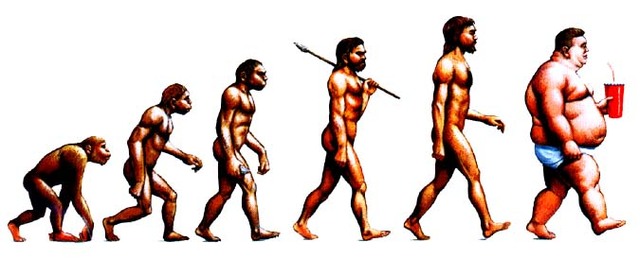Evolution theory teaches that survival is for the fittest living organism.
What is life? What is fit? And what does it mean to survive? Well, there are many definitions of course. A useful definition, in scientific perspective, is the one that allow us to analyze myriads things with fewest principles. So here they are.
A living organism is a class of objects that share 3 traits
- 1. Reproduce. Living organism can make copies.
- 2. Inherit. Living organism, in the process of reproducing, will inherit traits to the offspring.
- 3. Mutate. Living organism, in the process of inheriting, will make small mistakes. That seems like a reasonable definition.
If we look most living things around us, like dogs, cats, pigs, birds, fido, virus, etc., they all share those traits. However, based on those definitions, God is not alive, while computer virus, religious doctrines, ideologies, and ideas are alive. I don’t think God will mind though. It’s just a definition. The practical aspect is that we can use evolution theory to explain the sort of humans, cats, dogs, germs, doctrines, ideologies, and ideas that are common nowadays. Different living organism performs those 3 traits differently.
Those living organism that reproduces a lot becomes plenty. Those that reproduced a lot, become common. That’s the basic of evolution theory. For example, we see that peacocks tend to have long elaborated tails. From this, we can guess peacocks with long elaborate tail must have made more peachicks. Perhaps, peahen love peacocks with long elaborate tails. It’s true. Suppose it were true. Then peacocks with longer tails will mate with more peahens. Those happy couples will then produce more peachicks. Male peachicks will inherit long tails. Female peachicks will inherit preferences for long tail. So, peahens like peacocks with long tail. It looks like a circular argument. It is.
The truth is we don’t really know for sure, at least just from the reasoning, why peacocks have long tail. However, we do know that traits that lead to gene pool survival through sexual selection tend to be positive feedback. Those are traits that either enhance gene pool survival through regular means or signal capability to survive on the females. Samples of the former are Cheetah’s speed and men’s wealth. Samples of the latter are peacock’s tail and sport cars. The more peacocks have longer tail, the more peacocks in the future, will have even longer tails. The more peahens in the future will get turned on by long tail even more. Now, most males are poor.
Does that mean women like the poor?
Does being poor serve gene pool survival? The answer to the first question is no. The answer to the second is, well, sort of due to various unnatural sex laws against consensual sex. It’s tricky.

